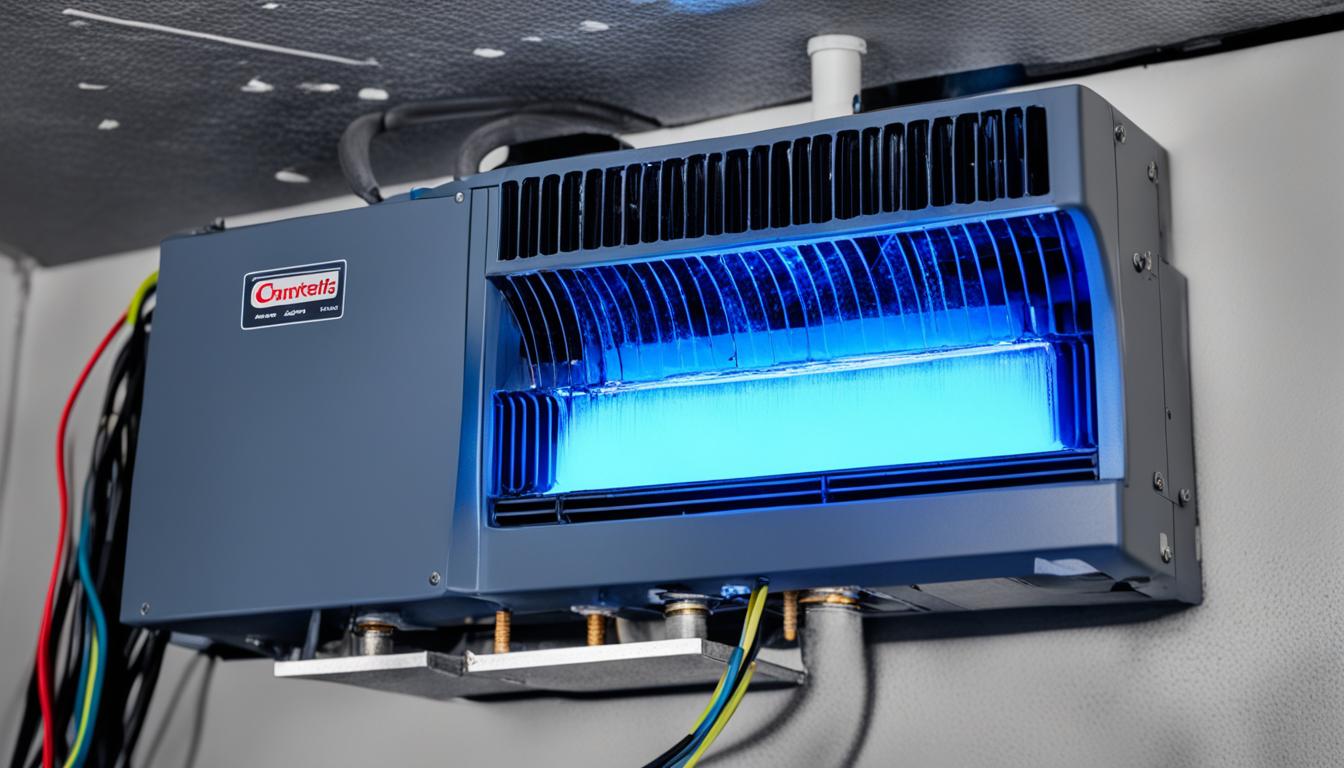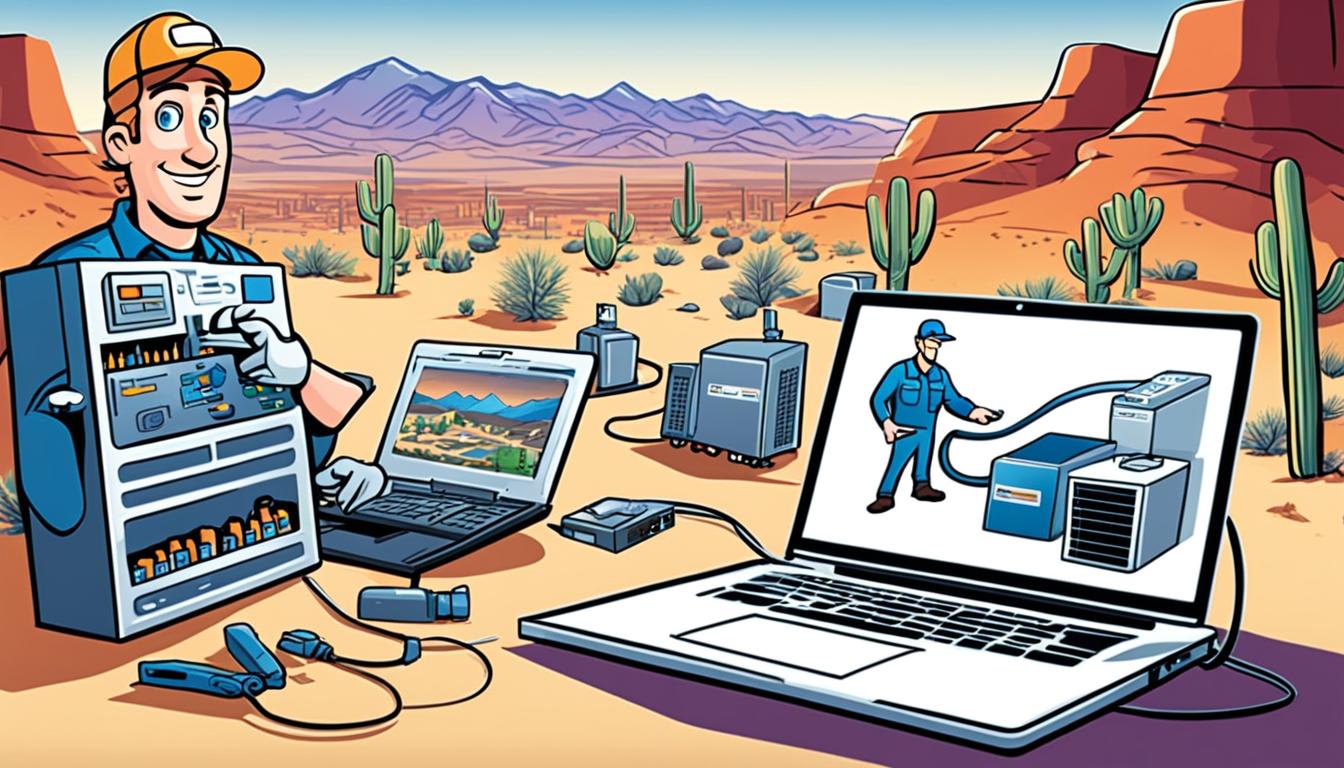Have you ever faced the frustration of trying to locate a refrigerant leak in a tight, hard-to-reach space within an HVAC system? It can be a daunting task that requires patience and precision. But fear not, because we’re here to help you find the best leak detectors specifically designed for those challenging areas!
Leakages in HVAC systems not only lead to performance issues but can also result in higher expenses. Detecting and repairing these leaks is essential to ensure efficient operation and compliance with EPA regulations. While there are traditional methods like soap bubble tests and fluorescent dyes, electronic refrigerant leak detectors have emerged as the most accurate and popular solution in the market.
When it comes to leak detection in tight spaces, you need a compact and reliable tool that can pinpoint even the smallest leaks. In this article, we will explore the top leak detectors specifically designed for hard-to-reach areas in HVAC systems, helping you save time, money, and frustration.
Key Takeaways:
- Refrigerant leaks in HVAC systems can lead to performance issues and increased expenses
- Electronic refrigerant leak detectors are the most accurate and popular method for leak detection
- Infrared leak detectors are considered the best option for their accuracy and longevity
- Leak detectors with infrared or heated diode sensors offer high sensitivity and can detect even the smallest leaks
- Compact leak detectors designed for tight spaces are essential for efficient leak detection in HVAC systems
How do refrigerant leak detectors work?
Refrigerant leak detectors are essential tools used by HVAC technicians to pinpoint leaks in HVAC systems. These leaks often occur at miniscule defects in pipes or fittings that are too small to see with the naked eye. In this section, we will explore the working principles of these detectors and the methods they employ to detect leaks accurately.
There are various methods used to detect refrigerant leaks in HVAC systems, including visual inspection, soap bubble tests, UV dyes, and electronic detectors. While the traditional methods can be effective in some cases, the newest refrigerant leak detectors on the market offer higher sensitivity and more precise leak detection.
The latest HVAC leak detection equipment utilizes infrared (IR) or heated diode sensors that can detect even the smallest leaks with remarkable accuracy. These detectors work by detecting the presence of refrigerant gases in the surrounding air.
Infrared leak detectors use an optical sensor that detects the infrared radiation emitted by refrigerant gases. This method is highly sensitive and can detect even trace amounts of refrigerant. In contrast, heated diode sensors heat the air sample and measure the change in resistance caused by the presence of refrigerant gases. Both methods offer excellent sensitivity and are not affected by outdoor conditions or other interfering substances.
One of the significant advantages of using electronic leak detectors is that they eliminate the need for messy soap bubble tests or UV dyes, which can be time-consuming and less accurate. Moreover, these detectors do not require direct visibility of the leak, making them suitable for detecting leaks in tight spaces and hard-to-reach areas.
Electronic refrigerant leak detectors often come with adjustable sensitivity levels, allowing technicians to customize the detector’s response to find leaks of various sizes. Some detectors can detect leaks as small as 1 gram of refrigerant per year, ensuring thorough and precise leak detection.
In summary, modern refrigerant leak detectors, such as those equipped with infrared or heated diode sensors, provide high sensitivity and accurate leak detection for HVAC systems. These detectors offer a more efficient and reliable alternative to traditional leak detection methods, ensuring the identification and repair of even the smallest leaks.
| Advantages | Disadvantages |
|---|---|
| High sensitivity | Initial cost of equipment |
| Accurate leak detection | Requires calibration and maintenance |
| Non-intrusive and non-destructive | Dependent on technician skill and training |
| Adjustable sensitivity levels | May not detect leaks in certain situations (e.g., when the system is not pressurized) |
Table: Pros and cons of refrigerant leak detectors
What are the advantages of using EZSmoke for leak detection in tight spaces?
EZSmoke is a top-rated and versatile solution for HVAC leak detection in tight spaces. This low-profile and portable leak detection technology offers several advantages for AC repair contractors looking to efficiently locate and repair leaks in hard-to-reach areas.
One of the key advantages of EZSmoke is its non-toxic smoke-based method. It uses visible vapor technology to emit a non-toxic smoke with a trace dye through pipes or enclosed spaces. This enables technicians to quickly identify and pinpoint leaks, whether they are cuts, cracks, fractures, punctures, porosity, or unsealed fittings, in residential or commercial buildings.
Moreover, EZSmoke’s smoke is citrus-scented and contains UV dye, enhancing its reliability and ease of use. The addition of the UV dye makes it easier for technicians to detect leaks, even in areas with limited visibility. This feature ensures accurate and efficient leak detection, saving time and resources for AC repair contractors.
With three different leak detection methods—smoke, dye, and citrus scent—EZSmoke offers versatility and adaptability to different HVAC systems and tight spaces. Its low profile and portability make it an ideal choice for HVAC professionals who need an effective and efficient leak detection solution for confined areas. By incorporating EZSmoke into their toolkit, AC repair contractors can confidently and accurately detect and repair leaks in tight spaces, ensuring optimal system performance and customer satisfaction.





0 Comments